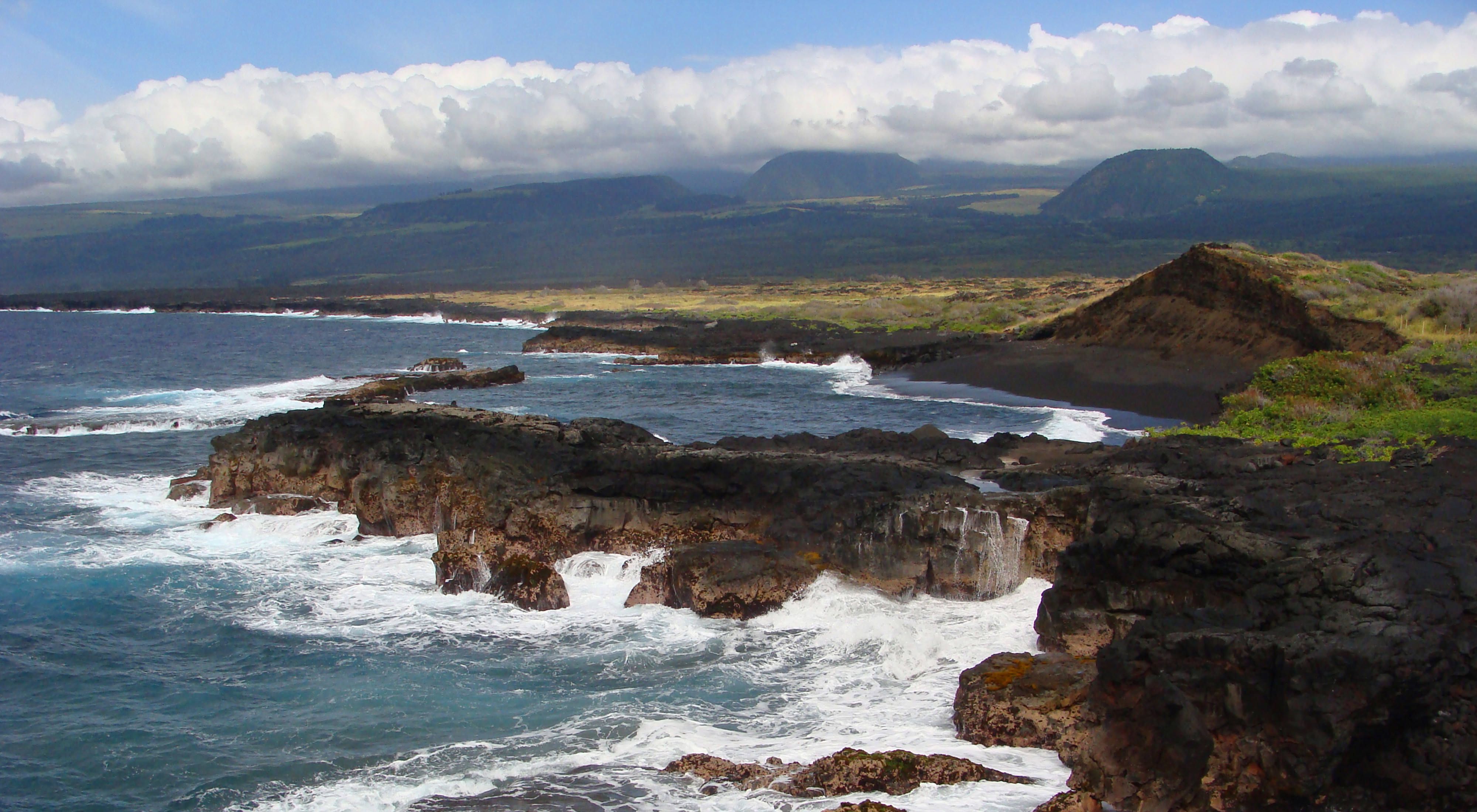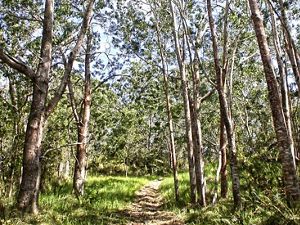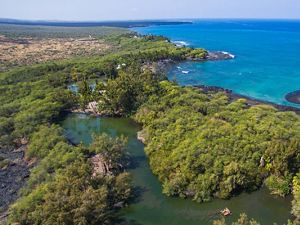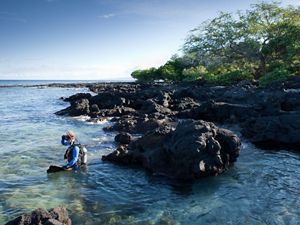Description
This small beach on the Ka‘ū Coast is the single most important nesting site in the U.S. for the endangered hawksbill turtle, as well as a refuge for the threatened green sea turtle. The honu‘ea (hawksbill) and honu (green sea turtle), the smallest of the world’s eight species of sea turtles, are the only two that call Hawai‘i home. The species’ survival depends upon undisturbed nesting sites and healthy coral reefs, which are their primary habitat. In the Hawai‘ian Islands, nesting occurs primarily on the Island of Hawai‘i.
TNC’s acquisition of Kamehame Beach in 2002 ensures that this important nesting location for Hawaiian sea turtles will remain a safe haven for generations to come.
Why TNC Selected This Site
Though sea turtles have inhabited the earth’s oceans for millions of years, today their survival is threatened not only by natural predators like sharks, but also by introduced ants, rats, birds, and mongooses. The loss of viable nesting grounds, marine pollution, and hunting, as well as illegal trade in tortoiseshell products, further impacts native turtles. An average of only 1% of all hawksbill turtles survive to adulthood.
What TNC Is Doing
TNC, the National Park Service, and the U.S. Fish & Wildlife Service cooperate on managing the preserve and operate a volunteer turtle-monitoring program to protect the nests from rats, mongooses, and other predators. Every year and each night from June through November, volunteers monitor the nesting sites of these endangered sea turtles. To volunteer, call the Hawksbill Sea Turtle Recovery Project coordinator at (808) 985-6090.



